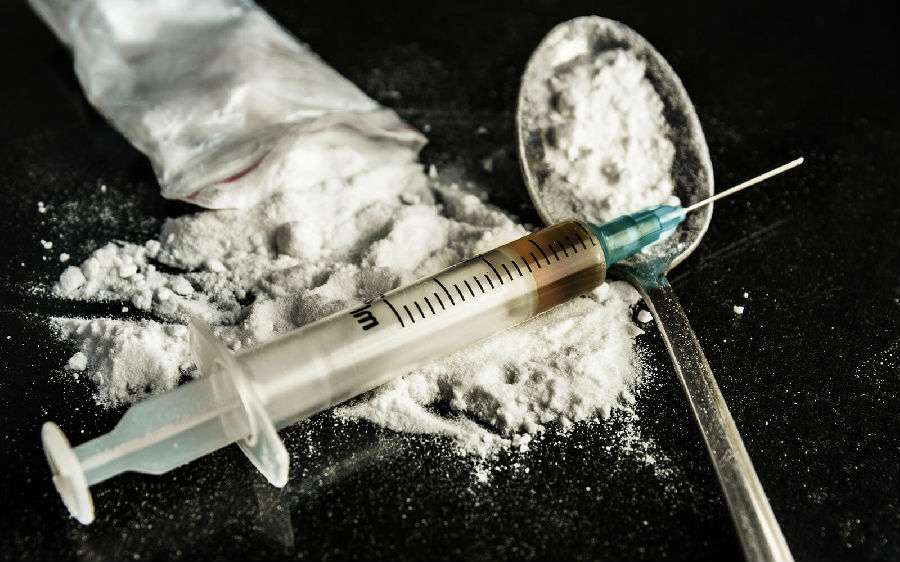Pharmaceutical companies helped spark this epidemic by aggressively marketing opioids as low-risk solutions for long-term chronic pain.
這一疫情一定程度上也跟藥企大力鼓吹阿片類藥物不僅能夠治療慢性疼痛,風險還低的做法有關。
We now know that they’re anything but low-risk—and yet drugmakers have continued to push opioids and reward doctors who prescribe them.
如今我們已經知道這種藥物的風險絲毫不低,但藥企仍在繼續推銷,繼續給開處方的醫生回扣。
Attempts to crack down on prescriptions have helped,
盡管打擊處方醫生亂開藥的措施起到了一定作用,
but Americans are still prescribed far more opioids than anyone else in the world—
但美國開出的阿片類止痛藥數量仍然遠超世界其他國家——
enough for almost every adult in the country to have their own bottle of pills.
其數量足以讓每個成年人都分到一瓶。
Political efforts in Washington have also been insufficient.
目前,政府在這方面采取的措施仍顯不夠。
In October, the White House declared a public-health emergency, but did not grant any additional money for the crisis.
10月份,白宮雖然宣布了一項突發性公共衛生事件,但并沒有為此次危機提供任何額外的資金。
The position of drug czar remains unfilled, and a limit on Medicaid reimbursements for large facilities remains in place,
緝毒專員的虛席仍有待補上,醫療補助計劃對大型設施的補償限額也仍然存在,
though the President’s own opioid commission suggested that lifting it would be "the single fastest way to increase treatment availability across the nation."
盡管總統自己的阿片類藥物委員會認為放寬政策是“唯一一個能夠最快速度提高全國就醫機會的辦法”。
This issue of TIME, the first in our 95-year history devoted to the work of a single photographer, is an effort to go beyond charts and policy.
本期《時代》周刊,創刊95年來我們首次選用了同一攝影師的攝影作品,宗旨就在于突破條條框框。
Over more than three decades, James Nachtwey has photographed war, famine and terror around the world for TIME.
三十多年的時間里,詹姆斯·納赫特威一直奔波于世界各地,為本刊拍攝戰爭、饑荒和恐怖活動等主題的素材。
He was at the Twin Towers as they crumbled on Sept.11 and in Baghdad as American tanks rolled in.
911事件發生時,他就在雙子塔里,而我們國家的坦克開進巴格達時他也在現場。

His haunting images of withered bodies in Somalia put a spotlight on starvation there, helping save 1.5 million people.
他在索馬里拍攝的那些枯萎的尸體至今令人難以忘懷,正是他的那些照片讓人們開始關注那里的饑餓問題,從而拯救了150萬人的性命。
Nachtwey goes where others desperately try to flee,
越是別人拼命想要逃離的地方,越是納赫特威要去的地方,
enduring gunfire and grenades out of the belief that the only way to stop the suffering is by bearing witness to it.
他甘愿冒著槍聲和炸彈,因為他堅信,唯有親眼見證,方能擺脫苦難。
Last year, we asked Nachtwey to bear witness to a pressing human crisis in his home country.
去年,我們邀請納赫特威來見證發生在他祖國的一起迫在眉睫的人類危機。
He and TIME’s Paul Moakley spent months on the streets of Boston and San Francisco,
他和本刊的保羅·莫克利花了好幾個月的時間在波士頓和舊金山的街頭調查,
on patrol with first responders in Ohio, New Mexico and West Virginia,
還與俄亥俄州,新墨西哥州和西弗吉尼亞州的救援人員一起巡邏,
inside jail cells in Kentucky, funerals in New Hampshire and prayer meetings in Massachusetts.
進肯塔基州的監獄牢房,甚至還參加過新罕布什爾州的葬禮和馬薩諸塞州的禱告會。
In all, they made thousands of pictures and videos and conducted more than 200 interviews.
最后,他們拍攝了數千張照片和視頻,采訪次數累計200多次。
On the pages that follow, Nachtwey’s images are paired with voices and stories from the people on the front lines.
接下來的內容是納赫特威拍攝的照片以及一線工作人員的講述。
The result is a human accounting of the toll opioids are taking on American life, the people behind the statistics.
合起來就是一個講述阿片類藥物如何破壞美國人的生活以及數據背后的人的故事。
譯文由可可原創,僅供學習交流使用,未經許可請勿轉載。












